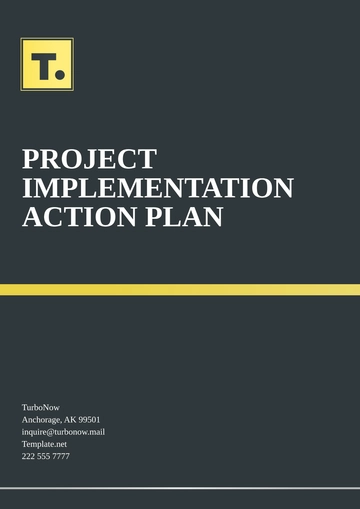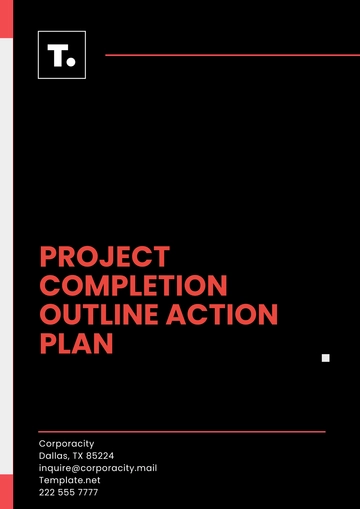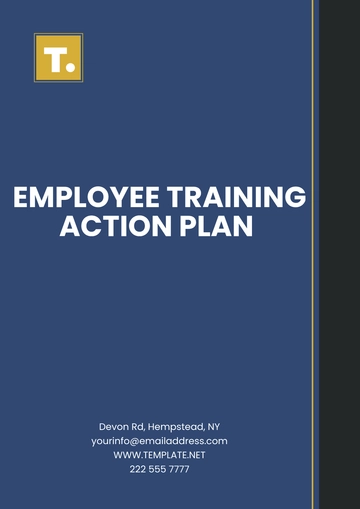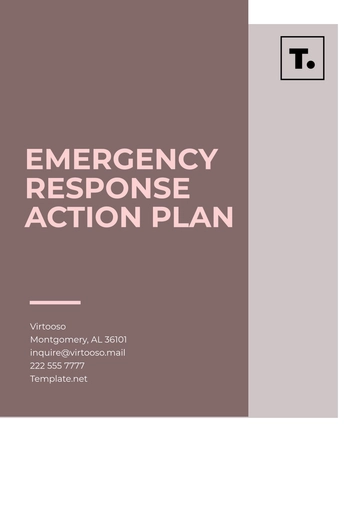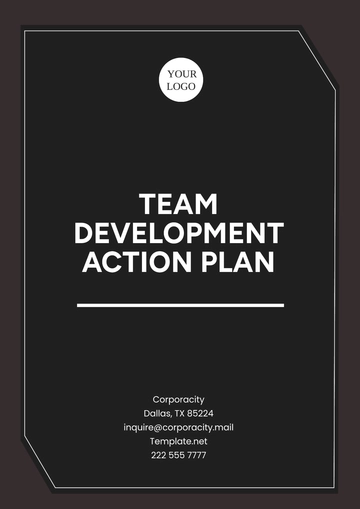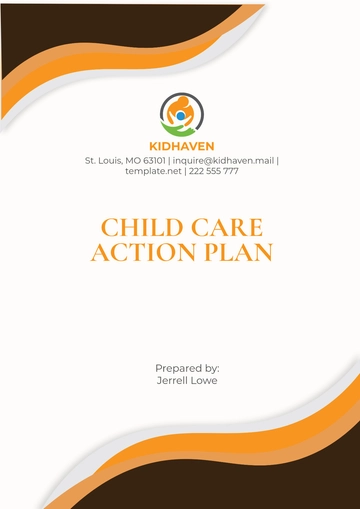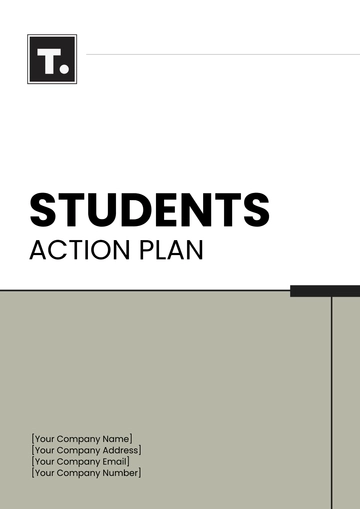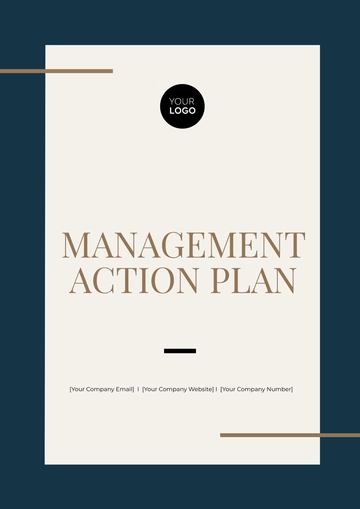Free School Emergency Action Plan
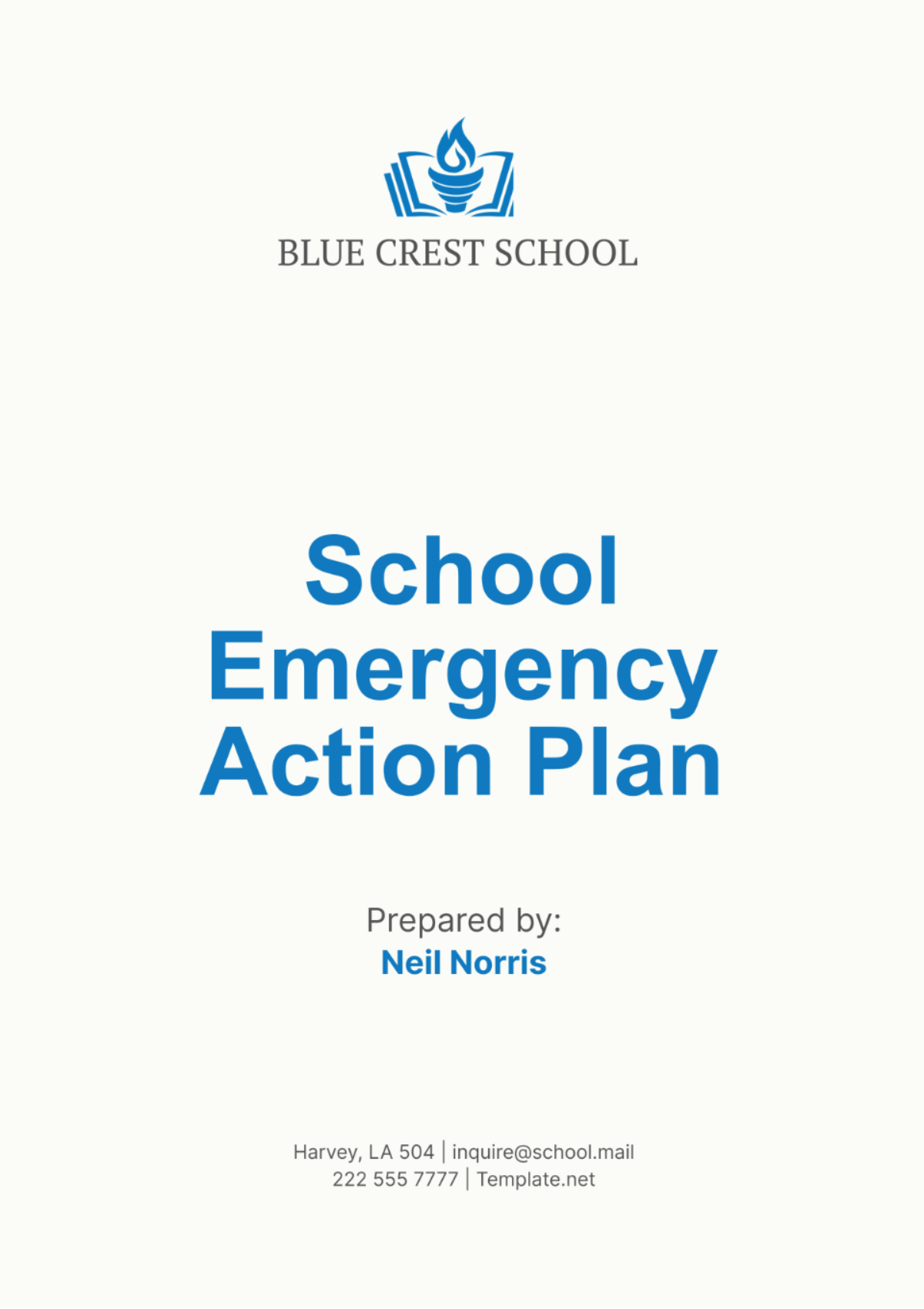
I. Introduction
This School Emergency Action Plan (SEAP) is developed by [Your Company Name] to provide comprehensive guidelines for handling emergency situations at the campus. This plan aims to ensure the safety and well-being of students, staff, and visitors by outlining clear procedures and responsibilities during emergencies. Our goal is to prepare and protect our school community through proactive planning, regular training, and effective communication.
II. Contact Information
Effective emergency management requires clear and accessible contact information for key personnel. This section provides detailed contact information to ensure that all relevant individuals and departments can be quickly reached in the event of an emergency.
Contact Person: | [Your Name] |
Position: | [Your Position] |
Email: | [Your Email] |
Phone: | [Your Company Number] |
Address: | [Your Company Address] |
Website: | [Your Company Website] |
Social Media: | [Your Company Social Media] |
A. Roles and Responsibilities
Contact Person: The designated contact person is responsible for overall coordination during an emergency. This individual ensures that all emergency protocols are followed and acts as the primary point of contact for external agencies.
Position: The contact person holds a position of authority within the school, such as Principal or Vice Principal, to make critical decisions swiftly.
Email and Phone: Up-to-date email and phone information ensure that the contact person can be reached quickly in case of an emergency.
Address: The physical address of the school allows for clear communication of location details to emergency responders.
Website and Social Media: These platforms are used to disseminate information and updates to the broader community, ensuring transparency and ongoing communication during emergencies.
III. Emergency Types and Responses
This section covers the potential emergencies that may arise and the corresponding responses. Each emergency type is accompanied by specific action steps to ensure a prompt and effective response.
A. Fire Emergency
Fires pose a significant threat to the safety of students, staff, and the school infrastructure. Immediate and well-coordinated action is essential to mitigate the impact of a fire.
Action Steps:
Activate the fire alarm.
Ensure that the alarm is loud enough to alert everyone in the building.
Check that the alarm system is functioning properly during regular maintenance.
Evacuate the building using the designated exits.
Teachers should lead their students out of the building calmly and quickly.
Follow the established evacuation routes to avoid congestion.
Ensure all doors are closed, but not locked, to prevent the fire from spreading.
Close classroom and office doors behind you to contain the fire.
Call 911 and provide details about the fire.
Provide specific information about the location and intensity of the fire.
Stay on the line until the dispatcher confirms all necessary details.
Assemble at the pre-determined assembly point for headcount.
Conduct a roll call to ensure all students and staff are accounted for.
Report any missing individuals to the emergency responders immediately.
Assembly Point Location | Person Responsible | Backup Responsible |
|---|---|---|
School Yard | Principal | Vice Principal |
Parking Lot | Head Teacher | Safety Officer |
B. Medical Emergency
Medical emergencies require immediate attention to provide the necessary care and ensure the safety of the individual affected.
Action Steps:
Assess the situation and ensure the area is safe.
Check for any hazards that could cause further injury.
Move the individual only if it is safe to do so.
Call 911 and provide details about the injury or illness.
Give clear and concise information to emergency responders.
Provide the exact location within the school where the incident occurred.
Administer first aid if trained and applicable.
Use a first aid kit to provide immediate care.
Follow the instructions for CPR or other emergency procedures if needed.
Inform parents/guardians as soon as possible.
Ensure timely communication with the student’s family.
Provide updates on the individual's condition and the actions taken.
Medical Emergency Contact | Phone Number | Location |
|---|---|---|
School Nurse | [Nurse's Phone] | Nurse’s Office |
Local Hospital | [Hospital Phone] | [Hospital Address] |
C. Natural Disasters
Natural disasters such as earthquakes and floods require specific protocols to ensure the safety of all individuals on school premises.
Earthquake Protocols
Drop, cover, and hold on until shaking stops.
Instruct everyone to get under sturdy furniture and hold on.
Stay away from windows and heavy objects that might fall.
Evacuate the building if necessary, using designated exits.
Ensure a calm and orderly evacuation.
Avoid using elevators.
Assemble at the pre-determined assembly point for headcount.
Conduct a roll call to ensure everyone is safe.
Report any injuries and call 911 if needed.
Safe Location for Natural Disasters | Person Responsible | Backup Responsible |
|---|---|---|
Gymnasium | Vice Principal | Head Teacher |
Nearby Community Center | Safety Officer | School Counselor |
Flood Protocols
Move to higher ground immediately.
Avoid areas prone to flooding.
Follow evacuation routes as instructed by authorities.
Ensure all students and staff follow the designated routes.
Assemble at the pre-determined safe location.
Conduct a roll call to ensure everyone is safe.
Safe Location for Natural Disasters | Person Responsible | Backup Responsible |
|---|---|---|
Gymnasium | Vice Principal | Head Teacher |
Nearby Community Center | Safety Officer | School Counselor |
IV. Communication Plan
Ensuring clear lines of communication is crucial for effective coordination during emergencies. This section outlines both internal and external communication strategies.
Internal Communication
Effective internal communication ensures that all staff members are informed and able to coordinate their actions during an emergency.
Establish a chain of command.
Principal -> Vice Principal -> Head Teachers -> Staff
Clearly define roles and responsibilities to avoid confusion.
Utilize school intercom systems for announcements.
Make clear and concise announcements as needed.
Ensure the intercom system is regularly tested and maintained.
Ensure all staff members have radios or cell phones for communication.
Maintain a list of contact numbers for quick access.
Conduct regular drills to test the communication systems.
Communication Method | Responsible Party |
|---|---|
Intercom Announcements | Principal |
Radios/Cell Phones | All Staff |
External Communication
External communication is essential for keeping parents, guardians, and the broader community informed during an emergency.
Notify parents and guardians using automated phone systems, emails, and social media.
Use multiple platforms to ensure the message is received.
Provide consistent updates to keep everyone informed.
Ensure up-to-date contact information is available for all students.
Regularly update contact lists to avoid any communication gaps.
Conduct periodic checks to verify the accuracy of the information.
Coordinate with local emergency services and media as necessary.
Provide accurate information to avoid misinformation.
Designate a spokesperson to handle media inquiries.
Communication Method | Responsible Party |
|---|---|
Automated Phone System | Administrative Staff |
Email Notifications | IT Department |
Social Media Updates | Communications Officer |
V. Training and Drills
Regular training and drills are essential to ensure preparedness for any emergency situation. This section details the training programs and drill schedules to be implemented, emphasizing the importance of continuous education and practice to maintain a high level of readiness.
Training
Effective training programs are crucial for preparing staff to handle emergencies competently and confidently. Regular, comprehensive training ensures that all personnel are well-versed in emergency protocols and can respond appropriately in crisis situations.
Conduct annual training sessions for all staff on emergency protocols.
These sessions should include detailed instructions and role-playing scenarios to simulate real-life emergencies.
Training should cover a range of potential emergencies, including fire, medical, and natural disasters.
Encourage active participation and questions to ensure all staff understand the procedures.
Provide first aid and CPR training to staff members.
Ensure that a sufficient number of staff members are certified in first aid and CPR.
Offer refresher courses annually to keep certifications up-to-date.
Include practical exercises where staff can practice their skills on mannequins or through simulations.
Ensure all staff are familiar with the SEAP and their specific roles.
Distribute copies of the SEAP to all staff members and hold review sessions to go over the contents.
Highlight any recent updates or changes to the plan.
Clarify individual roles and responsibilities during different types of emergencies.
Training Program | Frequency | Responsible Party |
|---|---|---|
Emergency Protocols | Annually | Safety Officer |
First Aid and CPR | Annually | School Nurse |
Drills
Drills are a critical component of emergency preparedness, providing an opportunity to practice and refine response procedures. Regular drills help to identify potential weaknesses in the emergency plan and ensure that both staff and students are prepared to act quickly and efficiently.
Schedule and conduct fire drills twice per year.
Simulate different scenarios, such as blocked exits, to improve response time and adaptability.
Ensure all alarms and equipment are functioning correctly before each drill.
Conduct debriefing sessions after each drill to discuss what went well and what could be improved.
Conduct lockdown drills annually.
Practice silent communication and hidden responses to ensure everyone knows how to remain unnoticed and secure.
Simulate various lockdown scenarios, including intruder alerts and external threats.
Review and update lockdown procedures based on the drill outcomes.
Hold earthquake and other natural disaster drills as needed.
Include all staff and students in the drills to ensure everyone knows the appropriate actions to take.
Practice procedures such as “Drop, Cover, and Hold On” for earthquakes.
Designate safe zones and ensure all participants know how to reach them quickly.
Drill Type | Frequency | Responsible Party |
|---|---|---|
Fire Drill | Bi-Annual | Principal |
Lockdown Drill | Annual | Vice Principal |
Earthquake Drill | Annual | Safety Officer |
VI. Review and Updates
The School Emergency Action Plan should be reviewed and updated annually or as needed to ensure it meets current safety standards and addresses new potential hazards. This section outlines the review process and schedule to keep the SEAP relevant and effective.
Review Process
Regular reviews of the SEAP are crucial for maintaining its effectiveness. By involving various stakeholders and continuously updating the plan, the school can ensure that it remains prepared for any emergency.
Annual Review Meeting
Convene a meeting with the safety committee to review the SEAP.
Include representatives from administration, teaching staff, support staff, and student bodies.
Discuss any incidents that occurred during the year and review the effectiveness of the response.
Feedback Collection
Collect feedback from staff, students, and parents about the SEAP’s effectiveness.
Use surveys, suggestion boxes, and meetings to gather input.
Pay special attention to feedback received after drills or actual emergencies.
Update Documentation
Make necessary updates to the SEAP based on feedback and new safety regulations.
Ensure that all changes are clearly documented and communicated to all stakeholders.
Update contact lists, emergency procedures, and training schedules as needed.
Distribute Updated SEAP
Ensure all staff members receive the updated SEAP and are informed of any changes.
Provide training sessions to explain new procedures and updates.
Ensure that updated copies of the SEAP are accessible in key locations around the school.
Next Review Date | Responsible Party |
|---|---|
June 18, 2051 | Safety Committee |
Importance of Continuous Improvement
Continuous improvement is a key principle in emergency management. By regularly reviewing and updating the SEAP, the school can adapt to new challenges and ensure that its emergency response remains effective.
Adaptation to New Threats: As new potential hazards are identified, the SEAP should be updated to address these threats.
Incorporation of Best Practices: Learn from other institutions and incorporate best practices into the SEAP.
Regulatory Compliance: Ensure that the SEAP complies with the latest safety regulations and standards.
Role of the Safety Committee
The safety committee plays a vital role in the review and update process. Comprising representatives from various stakeholder groups, the committee ensures that the SEAP reflects the needs and concerns of the entire school community.
Committee Composition: Include members from administration, faculty, support staff, parents, and students.
Regular Meetings: Hold regular meetings to discuss safety issues and review the SEAP.
Decision-Making: Empower the committee to make decisions regarding updates to the SEAP.
VII. Appendices
A. Emergency Contacts
Name | Position | Phone Number |
|---|---|---|
[Name] | Fire Department | [Phone Number] |
[Name] | Police Department | [Phone Number] |
[Name] | Local Hospital | [Phone Number] |
B. Emergency Kit Inventory
Item | Quantity | Location |
|---|---|---|
First Aid Kits | 10 | Nurse’s Office |
Fire Extinguishers | 20 | Throughout School |
Emergency Blankets | 30 | Gymnasium Storage |
C. Evacuation Maps
(Evacuation maps should be included here, showing routes and assembly points.)
D. Role Assignments
Role | Primary Responsible | Backup Responsible |
|---|---|---|
Fire Safety Coordinator | Principal | Vice Principal |
Medical Response Lead | School Nurse | Health Teacher |
Communication Officer | Communications Officer | IT Specialist |
VIII. Conclusion
The School Emergency Action Plan (SEAP) of [Your Company Name] is a vital document designed to protect the safety and well-being of our school community. Through clear guidelines, regular training, and effective communication, we are committed to being prepared for any emergency situation. This plan will be regularly reviewed and updated to ensure its effectiveness and relevance.
For more information or to discuss the SEAP, please contact us using the information provided in Section II. We appreciate the cooperation and support of all staff, students, and parents in maintaining a safe school environment.
- 100% Customizable, free editor
- Access 1 Million+ Templates, photo’s & graphics
- Download or share as a template
- Click and replace photos, graphics, text, backgrounds
- Resize, crop, AI write & more
- Access advanced editor
Ensure your school is prepared for any scenario with Template.net's School Emergency Action Plan Template. Crafted for educational institutions, this editable and customizable tool equips you with a comprehensive framework to swiftly respond to emergencies. Utilize our AI editor to tailor protocols for safety drills, communication strategies, and crisis management. Be proactive, be prepared—secure your school's safety today.




